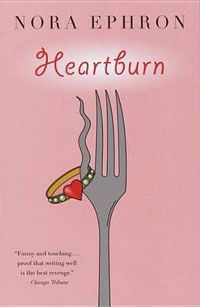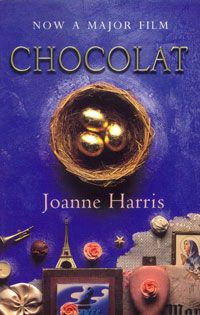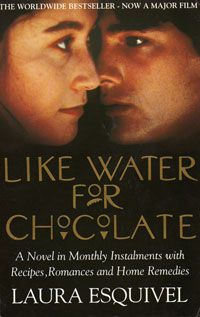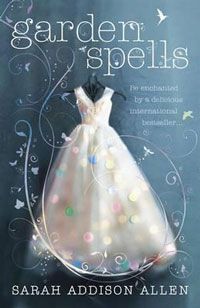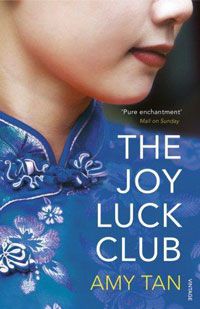Our digital marketing manager Lian Hingee shares some of her favourite novels that feature mouthwatering moments of food.
Heartburn by Nora Ephron
The protagonist at the centre of Nora Ephron’s semi-autobiographical novel Heartburn is Rachel Samstat – food writer, mother, and jilted wife. Food plays an important part in Rachel’s journey, whether it’s for comfort (mashed potato with slivers of cold butter added to each forkful), self-assurance (the perfect vinaigrette), memory (her mother’s recipe for lima beans and pears) or revenge (Key lime pie thrown straight in a philandering husband’s face).
Marvellously, Heartburn is full of recipes for each of the dishes mentioned, so with a bit of prep you can snack your way through the entire book.
Chocolat by Joanne Harris
Arguably Joanne Harris’ best-known novel, Chocolat was given the film treatment in 2000 with Juliette Binoche cast as Vianne Rocher, a charismatic chocolatier who goes toe-to-toe with a puritanical village priest when she sets up shop during Lent. Reading the descriptions of Rocher’s indulgent confections it’s not difficult to see why the priest was facing an uphill battle. Harris was born above her grandparent’s sweet shop, so it’s safe to say she had more than a passing experience with the pain d’epices, nougatines and pralines that are so beautifully described in the novel.
I challenge you to read a passage like ‘crystallized ginger in a hard sugar shell, releasing a mouthful of liqueur like a concentration of spices, a breath of aromatic air where sandalwood and cinnamon and lime vie for attention with cedar and allspice’ without letting your mouth water.
Like Water for Chocolate by Laura Esquivel
Heroine Tita is born ‘amid the smells of simmering noodle soup, thyme, bay leaves, and cilantro, steamed milk, garlic, and of course, onion’. Food continues to be at the heart of this book, and each of the 12 chapters opens with a recipe for whichever traditional Mexican dish Tita is cooking to mark every new milestone in her life: ‘Quail in Rose Petal Sauce’ when her lover marries her sister; ‘Turkey Mole’ for the birth of her nephew; ‘Beans with Chile’ to impress her future mother-in-law.
Throughout this story, food takes on a magical element, and Tita is able to project her feelings through the dishes that she creates. As the youngest daughter she has little power or authority over her own life and it’s only through food that she finally discovers an avenue through which she is able to assert herself.
Garden Spells by Sarah Addison Allen
As with Like Water for Chocolate, food holds magical properties in Sarah Addison Allen’s first novel, Garden Spells. Claire Waverley has embraced her family’s reputation for otherworldliness – channelling her talent for cooking dishes that have the ability to affect thoughts and moods into a successful catering business for the society elite of Bascomb, North Carolina.
Using edible flowers and herbs from her own garden, Claire cooks stuffed pumpkin blossoms and rose-hip soup (so guests can only see the beauty of your home), cupcakes with crystallised pansies (for thoughtful children), salads of chicory and mint (to help you believe that something good was around the corner) and honeysuckle wine (for seeing in the dark). To be honest, I’m not even sure how tasty some of these dishes are (a dip made from hyacinth bulbs?) but they sure sound pretty.
The Joy Luck Club by Amy Tan
Amy Tan’s novel, The Joy Luck Club, explores the relationship between mothers and daughters across generations and cultural identities. It focuses on four Chinese immigrant families who form a friendship through a mutual love of Mahjong and start a club where they meet to share stories and meals. Cooking the traditional dishes of their homeland allows the mothers to offset some of the displacement that they feel, as well as giving them a way to connect with their Chinese-American daughters – showing their love ‘not through hugs and kisses but with stern offerings of steamed dumplings, duck’s gizzards, and crab’.
More foodie fiction:
The Debt To Pleasure by John Lanchester – Lanchester’s debut novel offers a culinary tour through the life of Tarquin Winot, a food critic (and insufferable poseur) who has a penchant for waxing lyrical on everything from pancakes to curry.
The Hundred-foot Journey by Richard C. Morais – Recently adapted for film, this novel focuses on the bitter rivalry between the traditional French restaurant that’s been a staple in the town of Lumière, and the new Indian restaurant that’s taking the locals by storm.
Sweetbitter by Stephanie Danler – 22-year-old Tessa gets a job in a prestigious Manhattan restaurant and develops a passion for good food, expensive wine, and new experiences. Danler roughly based this novel on her own experience working as a waitress in New York.
The Dangers of Truffle Hunting by Sunni Overend – Food photographer Kit Gossard’s neat and tidy life is thrown into a chaos of black truffle hunting and illicit pastry lessons when she meets the new employee at her family’s vineyard in the Yarra Valley.
The Particular Sadness of Lemon Cake by Aimee Bender – On her ninth birthday, Rose Edelstein discovers she has a magical gift: she can taste people’s emotions in food. Suddenly, and for the rest of her life, food becomes a perilous way of discovering truths.


